Primark, the fashion store that brought the £3 jumper dress to the British shopper, is to open in the US as it attempts to become a global chain.
The budget retailer, owned by Associated British Foods, will open its first store in Boston, Massachusetts, in 2015 and said it was in negotiations to open up to eight further stores in north-east America, with warehousing to support them.
America has proved to be a leap too far for most UK retailers: Marks & Spencer, WH Smith, Sainsbury's and, most recently, Tesco have all seen their stateside ventures founder. However, fashion chains Topshop and Ted Baker have found favour with US shoppers.
Primark said it had decided to take its concept to the US after extensive research.
Primark has defied the recession to become one of the fastest-growing retail businesses in western Europe. It has more than 270 stores in nine countries, including Spain, Portugal, Germany and the Netherlands. In the past year it has opened over 1m sq ft of new retail space as it took its brand of cut-price fashion to France with stores in Marseille and Dijon.
"We think we have as differentiated and attractive a proposition in the US as we have in continental Europe and the British Isles. We think we have something special to offer," said George Weston, ABF chief executive.
The 70,000sq ft Boston store – as big as an out-of-town UK superstore – will open at the end of next year.
In the year ahead, Weston said, Primark expected to open about another 1m sq ft of space across Europe and the UK. It wants to open stores in York, Milton Keynes, Bath and Canterbury and also plans a big expansion of its Birmingham outlet.
Weston said Primark had been encouraged to go to the US by its experience in different markets in Europe, and heading over the Atlantic looked more attractive than the Far East or eastern Europe.
"It seemed a better option than anywhere else," he said.
The US venture is an ambitious new chapter for the retailer, which began life in 1969 as a single shop in Dublin under the name Penneys – the name it still trades under in Ireland. Primark's latest results show no sign of growth slipping: profits jumped by more than a quarter to £298m in the six months to the start of March, while the company rang through sales worth £2.3bn – up 14% up on last year.
But Primark's success in feeding shoppers' appetite for throwaway fashion has come under increasing scrutiny since the Rana Plaza factory collapse in Bangladesh, which claimed the lives of 1,133 garment workers and left more than 2,500 injured. The Primark label was among 28 western brands found in the rubble, as well as the UK's Bonmarché, Canada's Loblaw and Spain's Mango. Primark has paid more than any other retailer into a UN-backed compensation scheme, but on the first anniversary of the disaster this week the fund has raised only $15m (£9m), well short of its $40m target.
Anna McMullen of the Labour Behind the Label campaign said Primark had been engaged in the compensation process, but needed to rethink its business model. "They are driving a fast fashion agenda that has a negative effect on workers' rights around the world. The way that they and a lot of their main competitors are driving down prices to seek ever cheaper places and ever lower wages … to make the price of their product cheaper has had a really negative effect on the whole industry."
"Now they are entering the US market I can imagine that is only going to exacerbate the problem. It is all well and good to be involved in clearing up the mess, but it is as important to be a retailer that tries to drive change as well through normal business practice."
Weston said Primark had now carried out structural surveys on factories it used in Bangladesh and had a team in the country to monitor conditions for workers producing its clothes.
He said: "Fire risk remains an issue everywhere, so does the payment of overtime and bullying of staff," however, he said: "We have learned plenty of lessons after Rana Plaza, I hope the rest of the industry has too."
Shares in ABF were up almost 9% to £29.63 on Wednesday as investors eyed up entry into the huge US market, as well as the profits bonanza.
Maureen Hinton, retail analyst at Conlumino, said Primark was highly likely to succeed in America. "Young fashion is global now. The US tended to be quite conservative in fashion. I think that has changed because of the global access in fashion and entertainment."
"The main point about Primark is its price positioning. It is not going in as just another young fashion brand. It is going in as a young fashion brand with a very defined price edge on competitors that sets it apart. But it has all the trappings of the big stores and the feel of a more expensive fashion brand. I am sure that the likes of [US rival] Forever 21 are a bit worried."
She also pointed out that Primark had not exhuasted its prospects for expansion in Europe. "Primark has got potential to become a global fashion brand. It is at the early stages, if you compare it to the likes of Inditex and H&M, but there is potential." It is also likely that Primark harbours ambitions beyond the US: "I am sure China is probably on their list," Hinton said.
Stateside struggles
Tesco The UK's biggest supermarket opened on the west coast with great fanfare in 2007. It was forced to beat a retreat five years later after running up more than £1.5bn in losses and investment costs.
M&S Offloaded US grocer King's in 2006 to focus on its ailing British business. That was the second retreat for M&S, which lost two-thirds of its investment when it sold the Brooks Brothers clothing chain in 2001.
HMV Sold its last US outlet in 2004. It had been overambitious and never made a profit from its expensive stores.
Sainsbury's Sold its US chain Shaw's as it struggled to expand and compete.
WH Smith built up a portfolio of stores in airports and hotels but sold them after the 9/11 terrorist attacks in 2001.
Laura Ashley Sold its entire US chain for $1 in 1999 after a string of profit warnings caused by over-ambitious expansion.
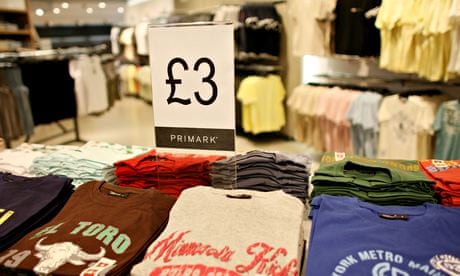

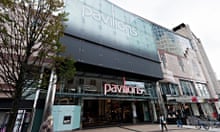

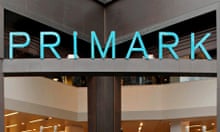
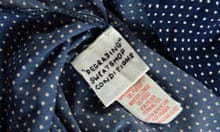



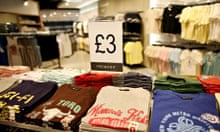
Comments (…)
Sign in or create your Guardian account to join the discussion